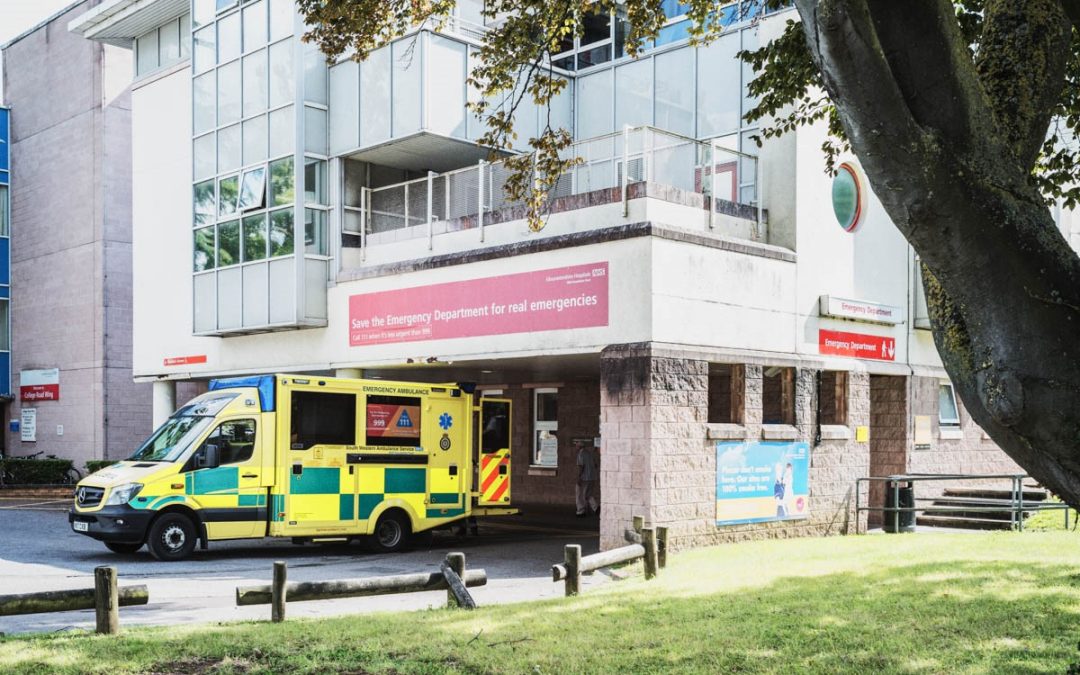Gloucestershire Hospitals NHS Foundation Trust (GHNHSFT) has the busiest Accident and Emergency (A&E) service in the whole of the South West of England. In a single month (July 2019) GHNHSFT treated 14,066 patients at the two major A&E departments at Gloucestershire Royal Hospital (GRH) and Cheltenham General Hospital (CGH). The next busiest A&E Department in the South-West was at the Bristol Royal Infirmary, which treated 9,984 patients during the same month.
In July 2019, 7.594 patients were also treated in the Minor Injuries Units in the various community hospitals around Gloucestershire.
According to National statistics, approximately 60% of A&E attendances arrive in the Department between 9 AM and 6 PM. 9% of attendances arrive in the middle of the night between midnight and 6 AM. The early hours are busiest on a Sunday, after the weekly excesses of a Saturday night.
The NHS has set a target of 4 hours for 95% of A&E patients to be seen, treated, and either discharged or admitted to hospital. GHNHSFT saw and treated 88.5% of patients within the four hours during July 2019. A&E performance usually worsens during the busy winter months.
A&E Performance is directly dependent on the number and flexibility of available beds for patients requiring emergency admission. If beds are not available, the A&E Department becomes clogged, whilst patients wait for a bed. The performance of an A&E Department becomes significantly worse, once the hospital bed occupancy rate reaches 92%. GRH bed occupancy rates are high, and emergency patients are regularly diverted from GRH to CGH both during the weekend and on weekdays.
It is important for a hospital to have enough headroom in its bed complement, as the impact of peaks in demand can take significant time to dissipate, once the A&E Department is full.
Importantly, NHS England and NHS Improvement have now realised that “Bigger isn’t always better”, when it comes to running an efficient A&E service.
Although fewer patients are seen and treated at CGH between 8 AM and 8 PM than at GRH, the closure of the A&E Department at CGH is likely to have a very significant impact on the overall A&E performance at GHNHSFT, and will lead to longer waits and a poorer patient experience.
GRH regularly experiences bed shortages, often displaying a bed status of 4 or Black on the Trust Intranet, meaning that there are no beds available within GRH at all.
Any planned reconfiguration, which increases emergency workload, will lead to major problems and potential standstills within the sole remaining full A&E Department in Gloucestershire, if the proposals to centralise full A&E services at GRH alone proceeds.
Sources
A&E Department and Hospital Bed Modelling – Where are the bottlenecks?
Pearson et al (2018) NHS England & NHS Improvement
Expo NHS 2018
Accident and Emergency Statistics: Demand, Performance and Pressure
Carl Baker
House Of Commons Library – Briefing Paper Number 6964 (2017)
Quality Watch – Focus on: A&E Attendances
Why are patients waiting longer?
The Health Foundation/Nuffield Trust (2014)
NHS England – A&E Attendances and Emergency Admissions
https://www.england.nhs.uk/statistics/statistical-work-areas/ae-waiting-times-and-activity/

